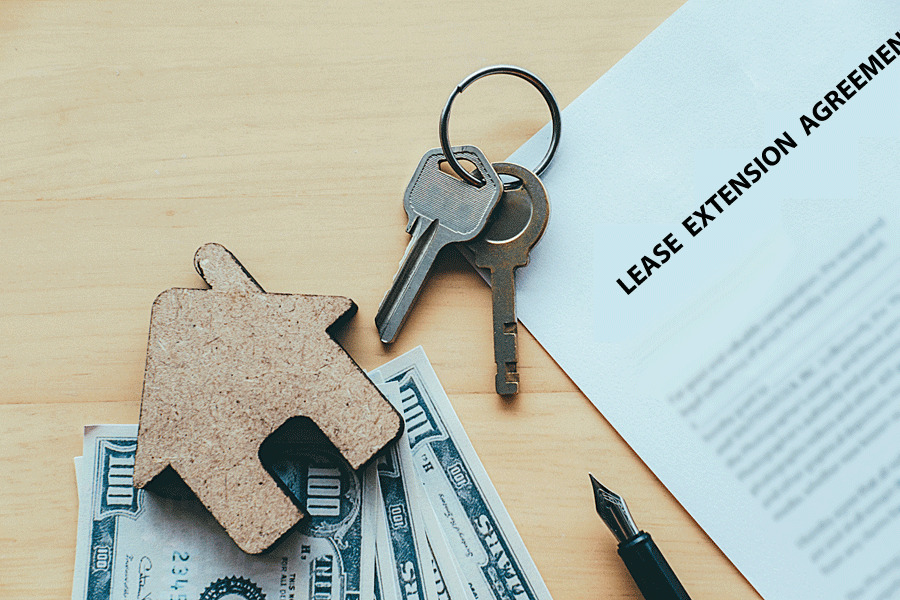A rental agreement form is a legally binding contract between a landlord and a tenant, which sets out the terms and specifications under which the tenant may occupy the property.
Usually, a lease agreement or rental contract will cover the basic points associated with renting property to the tenant, such as how much rent to pay, when payments are due, rules concerning pets and smoking, etc.
Landlords typically require prospective tenants to sign a rental agreement so that they know who will be living in the property, when they can enter the property, and under what circumstances. A rental agreement form cover information on the rights and responsibilities of both parties. The content of the contract will depend on the laws of your state and municipality. The rental agreement serves as the “constitution” of the relationship between the landlord and his or her tenants.
Rental agreements are used with both residential and commercial property. The agreement is a legal form that must be signed to be legally enforceable. Some of the clauses included in most if not all rental agreement forms are identification details of both parties, rent amount, payment terms, lease term, security deposit, etc.
The document acts as proof of the existing contract between the property owner and occupants. If there is no written documentation of the lease terms, it can be more difficult for either party to prove what was actually agreed upon. This can often result in conflict and lawsuits. To further elucidate the importance of a rental agreement form, this article will discuss how it works and its fundamental components.
How It Works
A rental agreement must reflect the covenant between the landlord and his or her tenants. To ensure this, a landlord can execute a rental agreement in the following steps:
Invite the tenant for a survey
The landlord should invite the tenant to view the rental unit. He or she can show the tenant around the house, pointing out the features that would be of interest to the tenant. At the meeting, the tenant can give the landlord a verbal offer of the monthly rent, and the landlord can give a general idea of what they are looking for in a future tenant.
Provide a rental application
After issuing the house tour, the landlord should issue the tenant a rental application to complete. The landlord can sign up for an online rental application to save time and reduce mistakes during the entire leasing procedure. The tenant ought to fill in the pertinent information requested, such as their name, address, phone number, social security number, references, etc., after which the landlord can contact them. The landlord can ask for an application fee to cover background check costs.
Run a background check and verify references
Once the application has been filled in, the landlord can run a background check and verify references. The landlord shall run the credit report, criminal history, and employment status to verify the information submitted in the application and also do a reference check according to the information provided. A background check is essential for landlords to ensure that people are who they claim to be. Landlords can use online platforms that conduct background checks for a fee.
Create the rental agreement form
If the tenant qualifies as a viable tenant, the landlord can then create a rental agreement form. The agreement should reflect the laws of the locality and state and the agreements between the landlord and the tenant. The items to be covered in the document include monthly rent amount, move-in date, security deposit, lease term, utilities, late fees, etc.
How to Fill
A rental agreement form should be prepared by the landlord. The rights and obligations of each party should be clearly outlined in the lease to avoid confusion later on. This usually occurs by stating all of the rights, responsibilities, and rules regarding who can enter (e.g., landlord, tenants, maintenance workers), who is responsible for the upkeep of the property, and any penalties for violating the lease.
Below is a procedure for filling out a rental agreement form:
Step 1: Name the parties
The first step is to list the names of the landlord and renter. This should be the official name a person uses in legal documents and in their daily life. The parties can be individuals or entities.
Step 2: Check the type of rental agreement
There are different types of leases. The rental agreement form should clarify the type of lease being executed. The landlord should tick the box highlighting the type of lease being executed. For example, the lease can be a fixed lease, month-to-month, etc.
Step 3: Give details of the rental property
Next, specify the address of the premises that the tenant is to occupy. Be specific, noting if it is a street address, apartment number, number of bedrooms, type of rental unit, and name of the building.
Then the form should highlight details such as:
- Appliances: Provide details of all the appliances that are present on the rental property. For example, refrigerator, dishwasher, stove, or other appliances.
- Furnishings: The agreement should state whether the rental unit will be furnished or not. If yes, what items are included (e.g., sofas, chairs, beds, tables, mattresses, or other furniture).
- Waterbeds: Waterbeds are often associated with damage to property due to mold caused by leaking, which is costly to the landlord. The rental agreement form should state that waterbeds are not permitted within the premises.
- Parking: The number of parking spaces allocated and whether the tenant will have a designated parking space. Amount of parking spaces, how many are included in the rent, if there is a daily or monthly fee for additional parking, etc.
Step 4: Define the terms of the rental agreement
Next, the form should include relevant details regarding the terms, conditions, and obligations of both parties in the rental agreement. The terms of tenancy should be stated clearly and accurately. Some of the most common terms that ought to be defined in the agreement have been discussed below.
However, the terms can vary from one situation to another to meet the landlord’s specific requirements:
- Alterations: The agreement should specify if alterations to the property are permitted or not. If yes, the agreement will state what types of alterations are permitted. Often, landlords reject any modifications or allow them provided the property is reverted back to its original stature.
- Verbal agreements: The rental agreement form should clarify that any verbal agreements are not valid and shall not be legally enforceable. All agreements should be written.
- Governing law: Landlords should clarify what governing law applies to their rental agreements. This is typically done by indicating the name of the state where the property is located.
- Guests: The agreement should specify the tenant’s rules and regulations regarding hosting guests on the property. The rental agreement form can be used to limit the number of guests the tenant can have within the premises at any particular time.
- Maximum time period: A rental agreement can also govern the maximum number of hours or days guests can stay within the premises.
- House rules: Any applicable house rules should be outlined in the rental agreement. Examples of house rules include cleaning days, party restrictions, quiet hours, etc.
- Insurance (bond): The landlord can declare the type of insurance and the associated amount they have obtained on behalf of the tenant. The agreement should also state whether the tenant must maintain any insurance, for instance, renter’s or landlord’s insurance, and, if so, what type.
- Late charges: Late charges can be included to ensure that the tenant makes payments on time. The landlord and tenant can agree on a late payment fee that is fair and relevant to both parties or implement the state’s recommended rate.
- Grace period: The grace period is an allowance period between the due date and the deadline for making payments. The rental agreement form can indicate this period in days which is often dictated by state laws.
- Maintenance: This clause defines who is responsible for the maintenance of the premises. This clause defines who is responsible for any repairs to the property, such as fixing broken light bulbs and replacing missing light switches, repairing buckling carpets, repairing appliances, ensuring that carpets are cleaned regularly, etc.
- Payment: The payment clause states the amount to be paid as monthly rent. The amount should be given in figures and words.
- Payment location: The rental agreement form should clarify how the payment should be made. For example, payment can be made via cash, check, or bank deposit. The form should state the mailing address or bank account, depending on the method.
- Due date: Monthly rent is a periodic payment. The agreement should clarify the monthly due date for making payment. Most landlords will pick the 1st of every month as the due date.
- Notices: The rental agreement form should state the address (mailing or email) of the landlord and tenant in case notices are to be served.
- Pet fee/deposit: Note that the landlord may want to keep some kind of deposit for pets on the property as insurance for the damage caused by pets. The deposit should be specified in words and figures.
- Receipt of agreement: A clause that clarifies that the rental agreement form won’t be enforceable unless both parties acknowledge receipt of the agreement can be included. This is because both parties should have a copy of the agreement to ascertain it contains what was agreed on.
- Subletting: Subletting can be allowed with the landlord’s permission or not. The agreement will state whether the tenant should first obtain the permission of the landlord before subletting to any other party. A sublease agreement can also be attached to this clause.
- Termination: The rental agreement form must state how much notice is required for either party to terminate a lease and what happens if either party terminates a lease early or is evicted before the lease due date.
- Utilities: This clause defines who is responsible for utility bills. Utilities include water, electricity, heat, sewerage services, etc. Utility bills can be assigned to one party or shared.
Step 5: List the monthly rent amount
Next, the rental agreement should indicate the rental amount being charged for the rental unit. This amount is determined by the landlord and based on rent control laws and local market rates.
Step 6: Assign a security deposit amount
The rental agreement form should then state the amount of rental deposit required, whether it is refundable or not, and if so, when and how. Landlords are not permitted to charge a non-refundable security deposit that exceeds one month’s rent. The security deposit ought to be kept in a separate bank account for the tenant’s use only in case of damages to the property or unpaid rent.
Step 7: Add signatures
The last step in creating a rental agreement form is getting both parties to sign it. The landlord and tenant should both sign the rental agreement form if it is to be made legally enforceable. Depending on the state’s laws, a signature can be either handwritten or printed (e.g., stamped) on the document. A signature can be witnessed by another party who is authorized to act on behalf of the owner and tenant. An authorized individual can be an attorney, notary public, or another legal agent such as a realtor, accountant, or banker. Again, this is often dependent on state laws and requirements.
Free Template
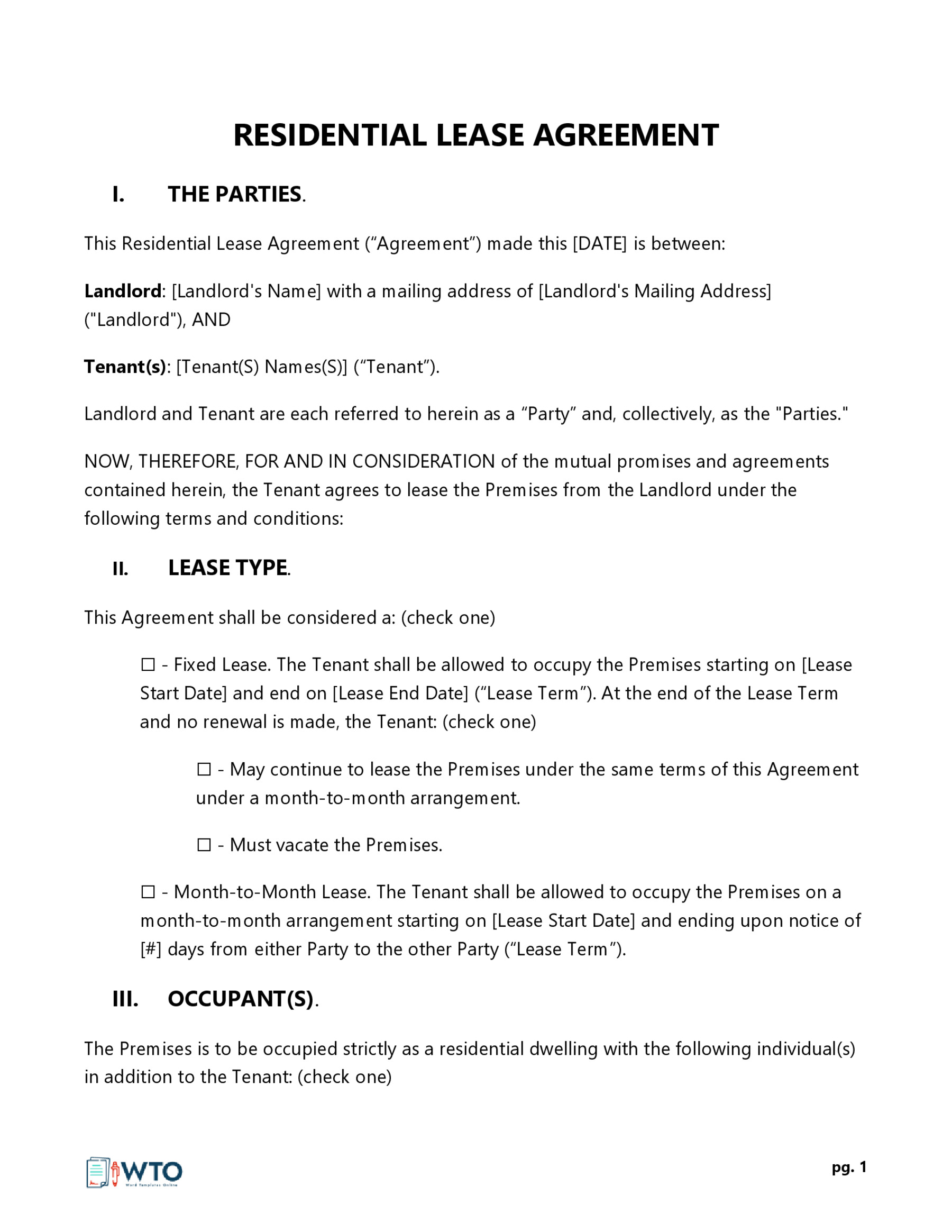
By Types
There are different types of leases and, consequently, different types of rental agreement forms. The types vary depending on what is being rented, length of lease, and other factors.
The common types of rental agreements include:
One (1) page rental form
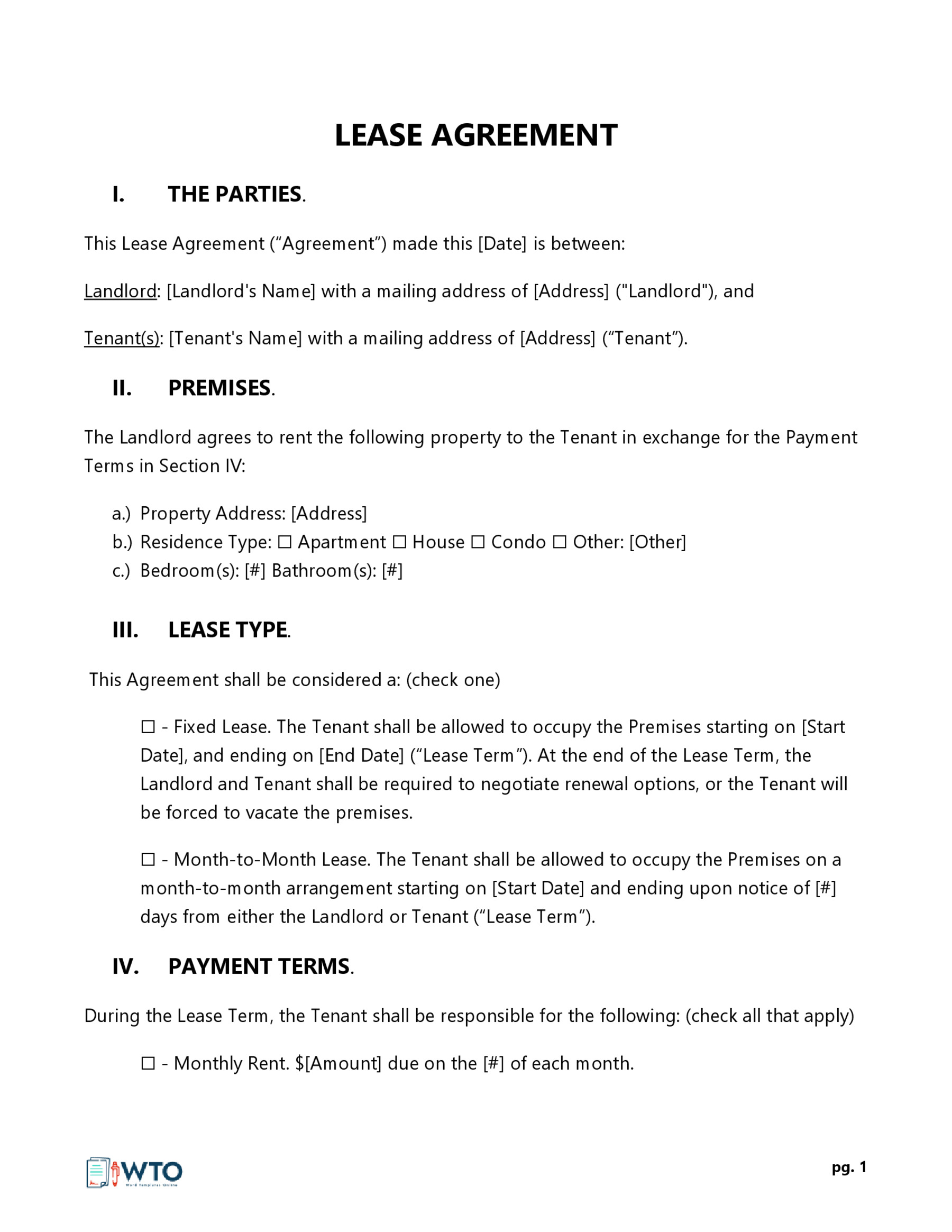
A one-page lease agreement may just be a simple agreement between the landlord and tenant. It is often used in residential leases of a fixed term of one year.
Commercial rental form
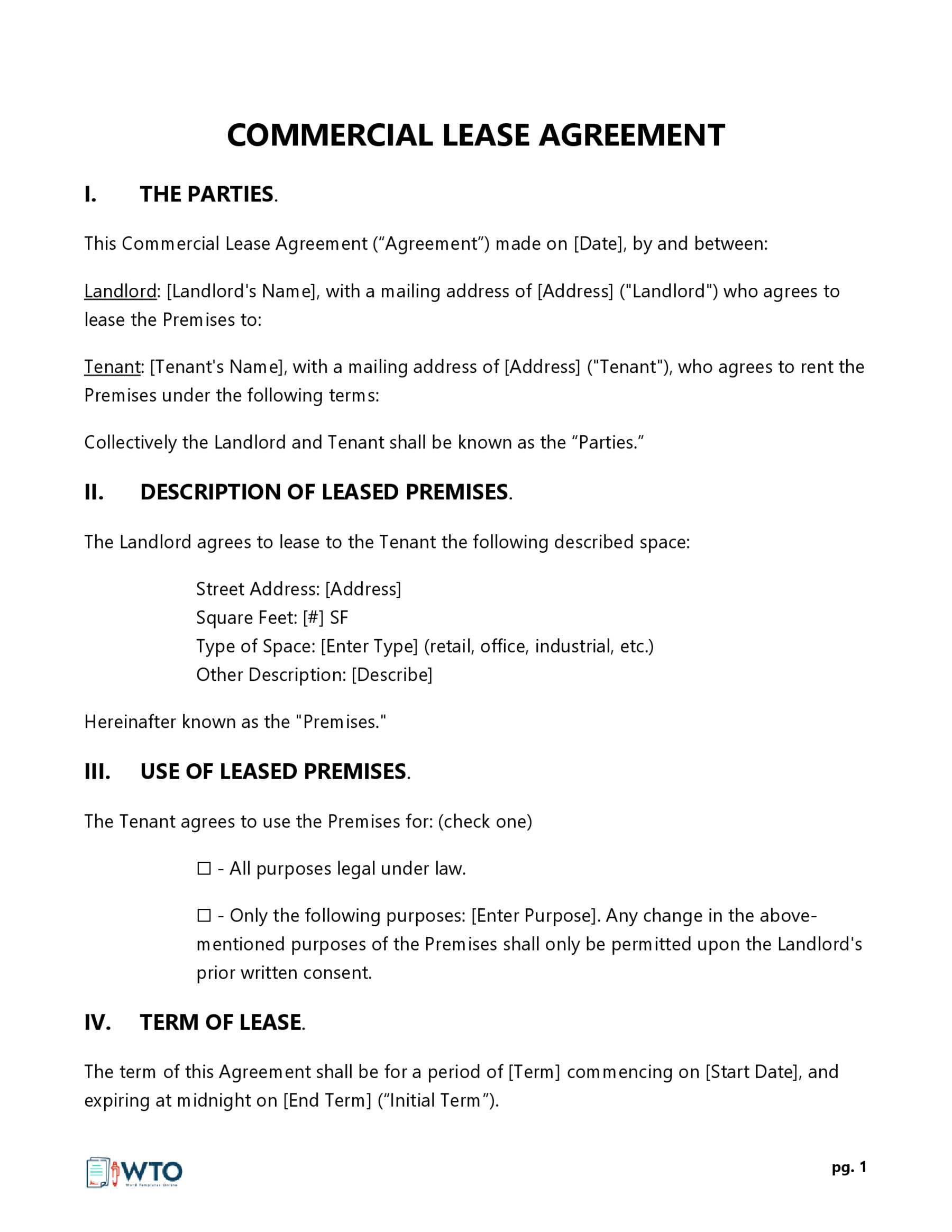
Most leases are some form of commercial leases. This means they are a business agreement between the landlord, tenant, broker, and/or property manager for an office, retail store, or any other business purpose.
Condominium (condo) rental form
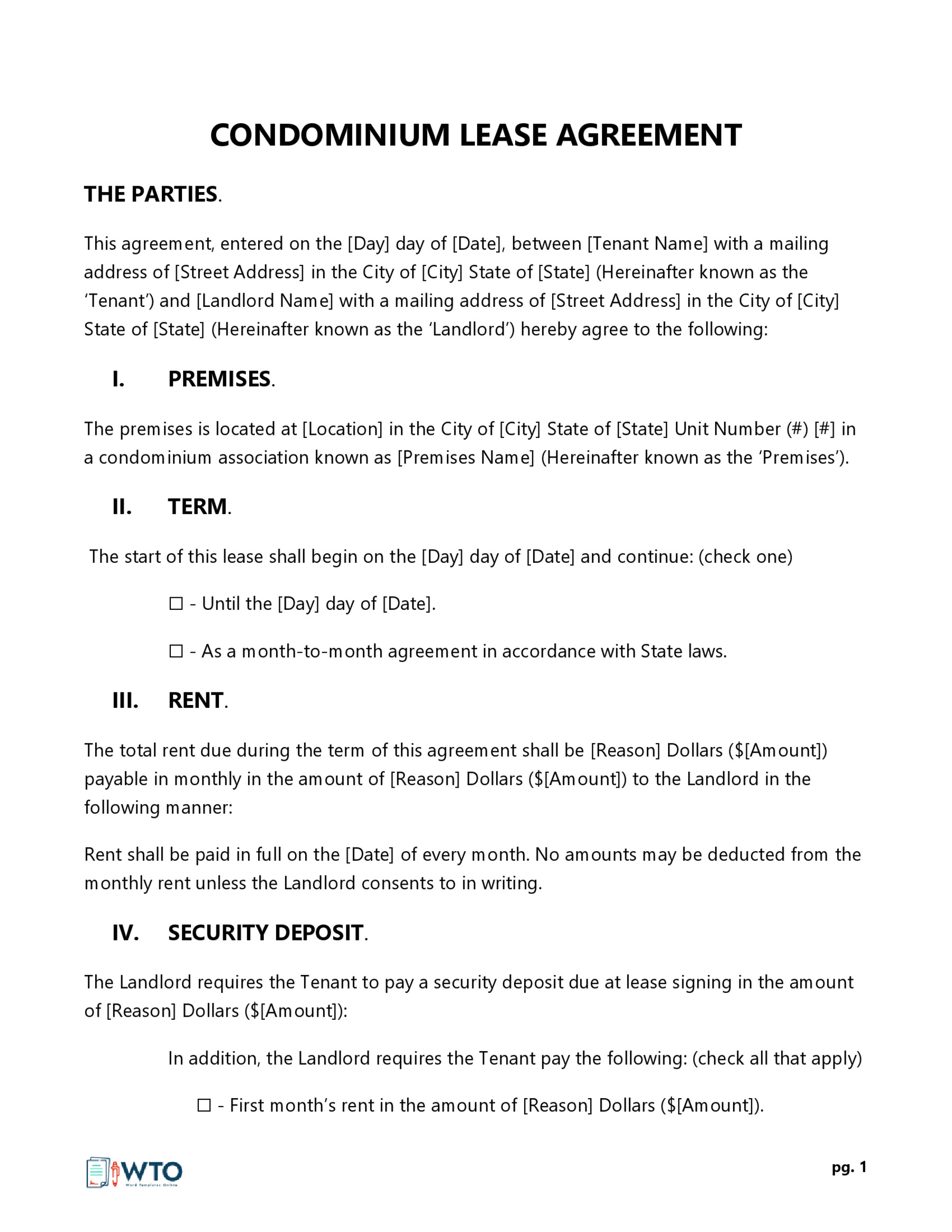
Condominiums are usually large buildings that consist of multiple one or two-bedroom apartments. These small apartment units (called “units”) are owned and occupied by their respective owners. The arrangement is that each owner pays monthly rent to the landlord of their own unit.
Equipment rental form
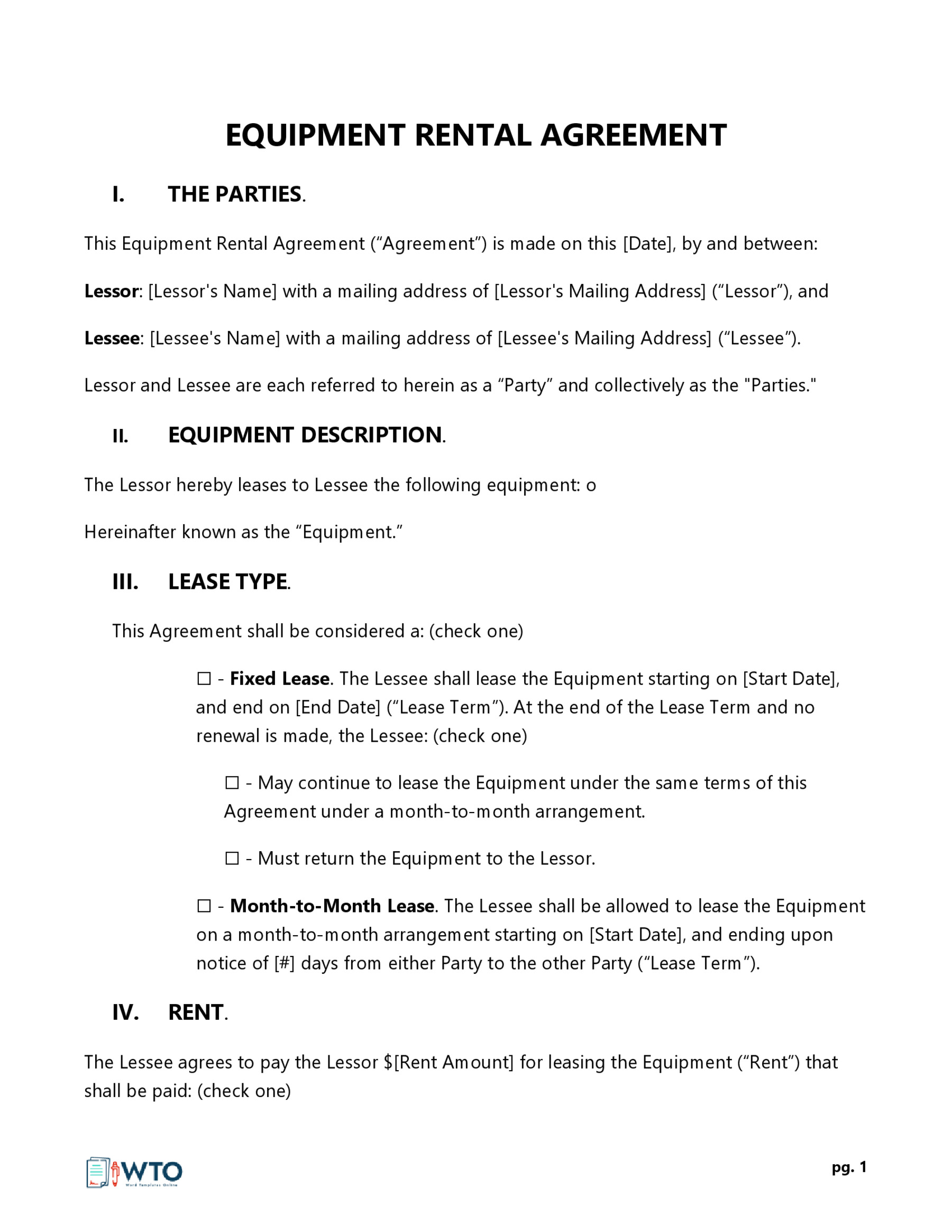
An equipment lease is used to rent office equipment, industrial machinery, and any other type of equipment. It can be for manufacturing, construction, or other purposes.
Hunting lease form
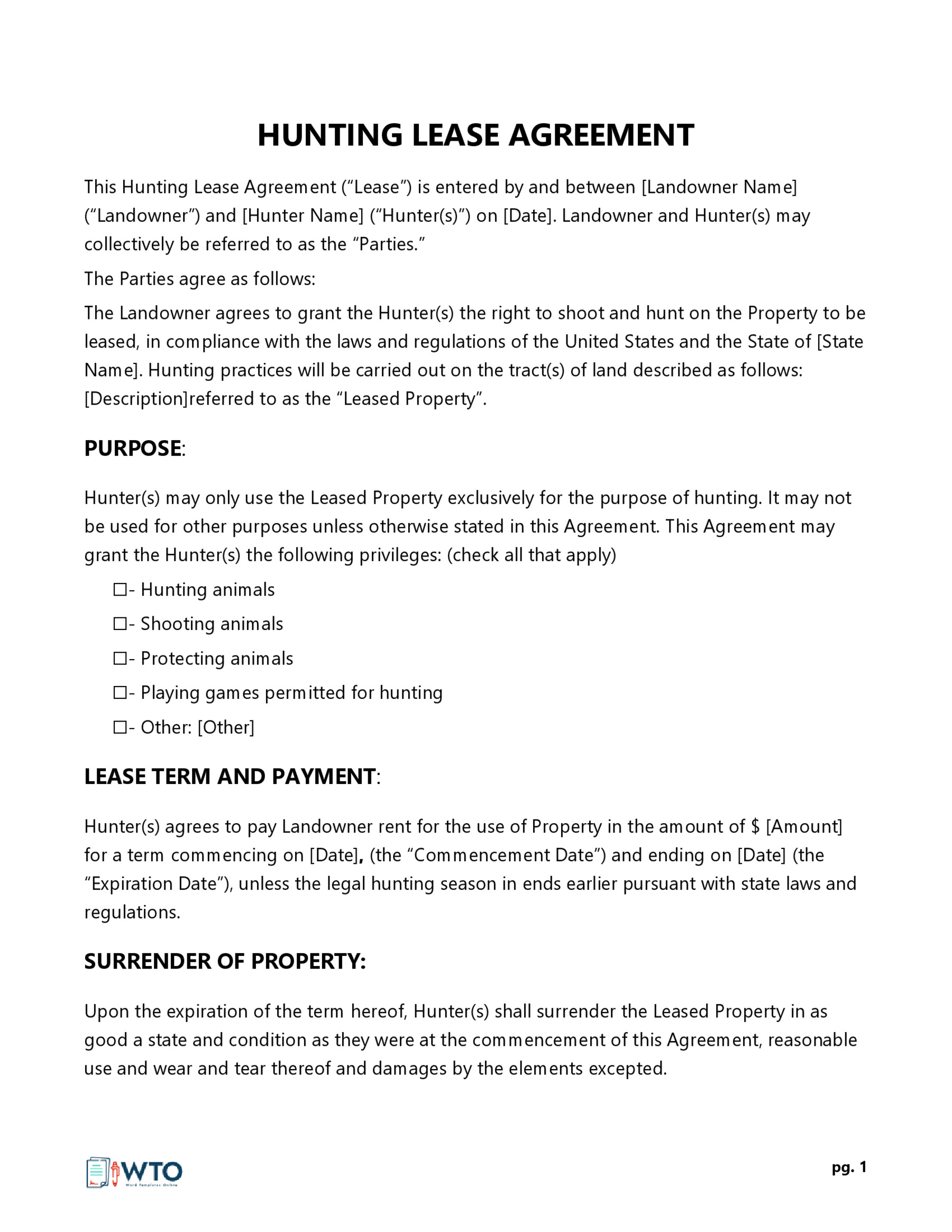
A hunting lease agreement form is used for renting premises for hunting purposes. It can be for any type of game, such as deer, turkey, and bears.
Month-to-month (tenancy at will) rental form
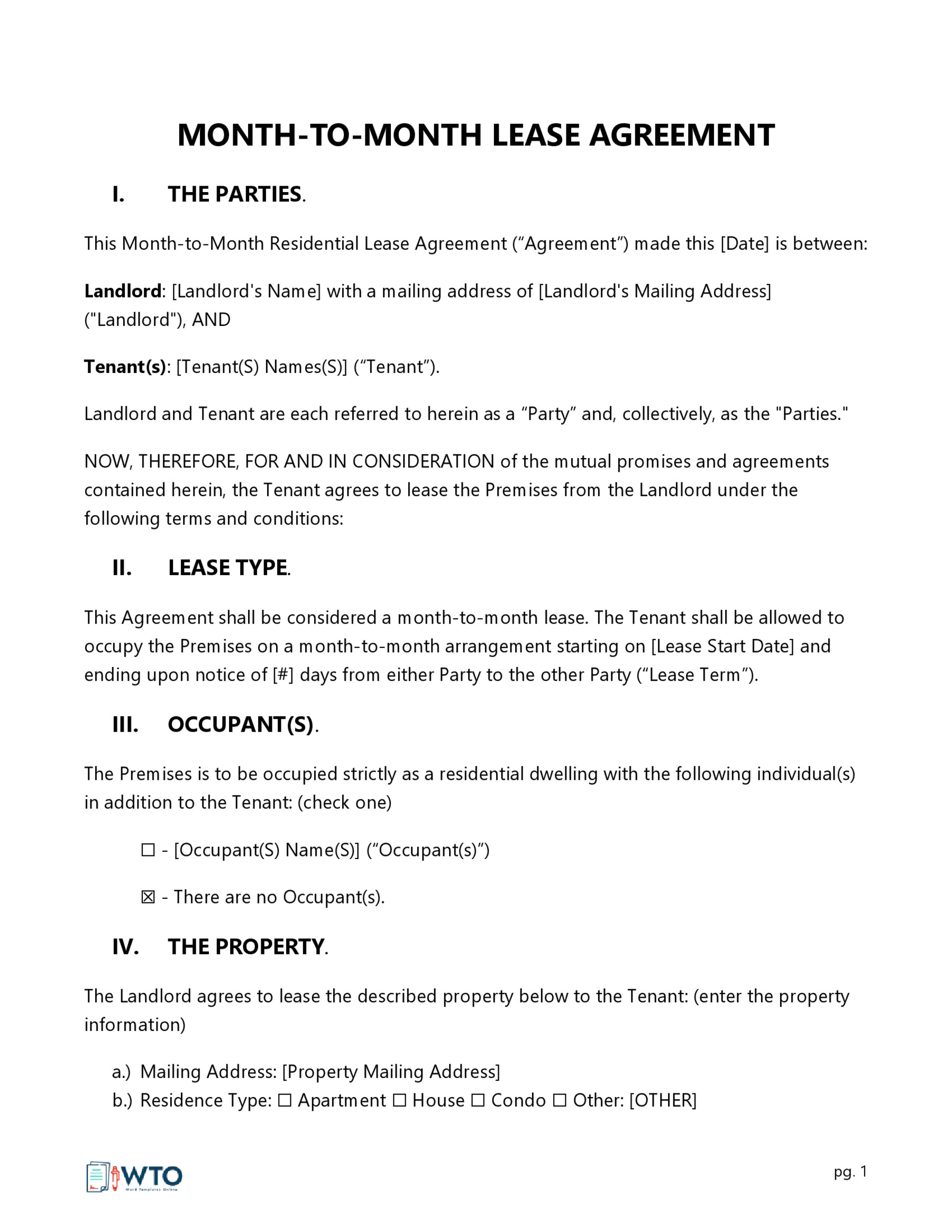
A tenancy at will is a month-to-month tenancy. The agreement is that the tenant may stay until either party decides to terminate.
Parking space rental form
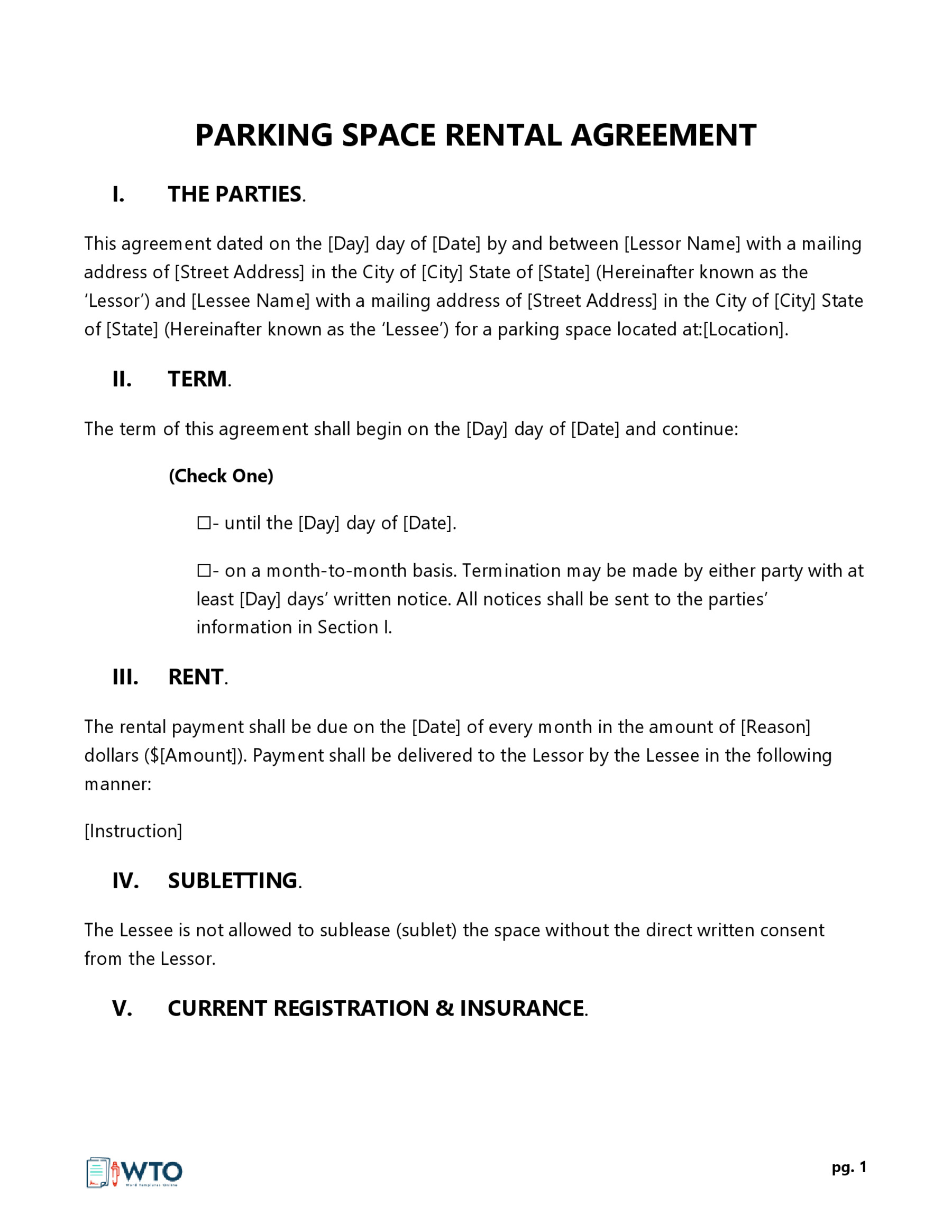
This agreement is used to rent a small parking space in an apartment, commercial building, or business for vehicle parking. This can be for any automobile, from motorcycles to SUVs.
Car rental agreement form

This is a type of contract between the owner of the vehicle and the renter of the vehicle. The renter signs this agreement and pays the owner a fee for using their vehicle.
Rent-to-own lease form
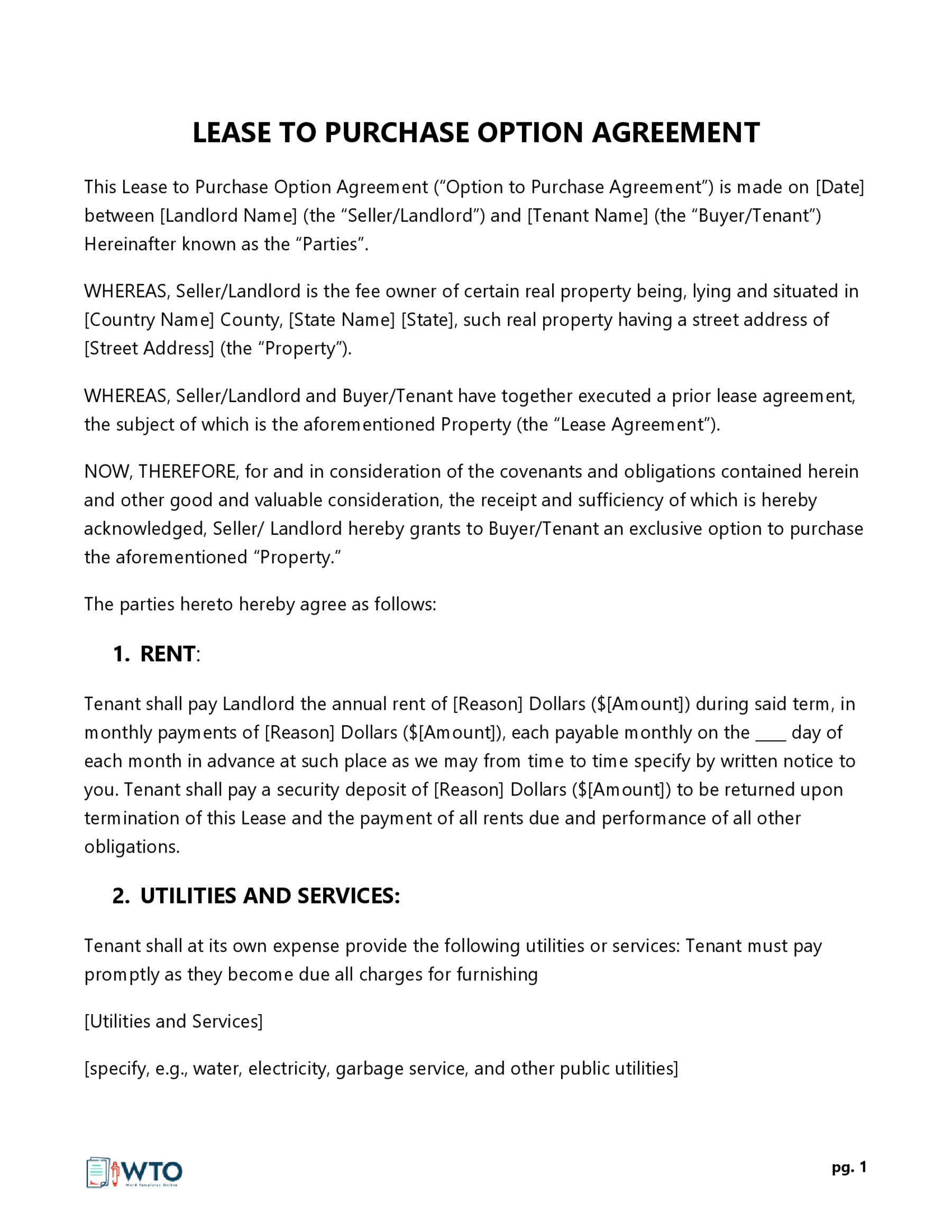
Rent-to-own is a form of contractual leasing where the renter pays the monthly rental and has the option to own the property at the end of the lease at a subsidized price.
Roommate (room rental) form
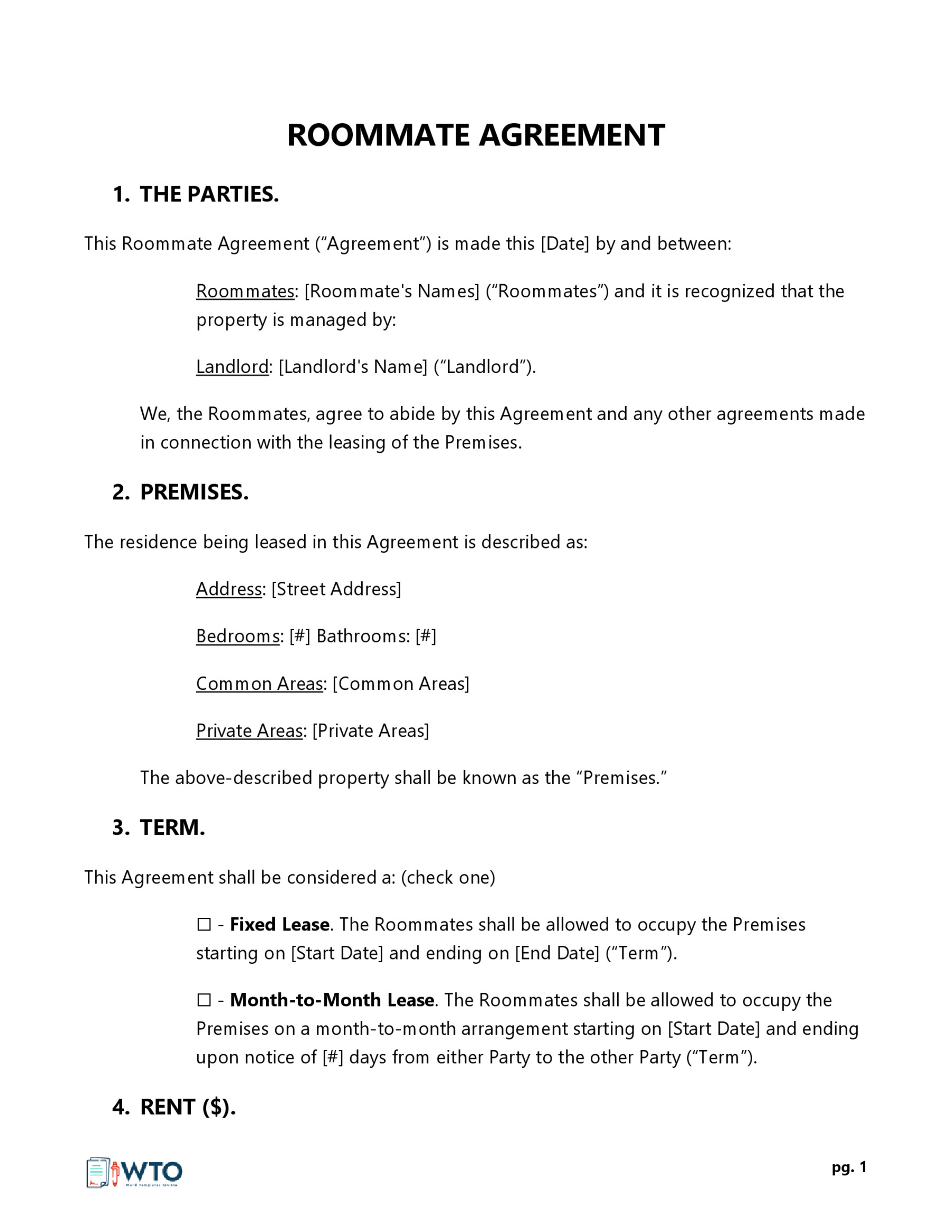
A roommate agreement is one made between two individuals (roommates) occupying the same rental unit. This agreement form states the roles and responsibilities of each roommate towards paying rent and utilities, and chores.
Standard lease (1-year)
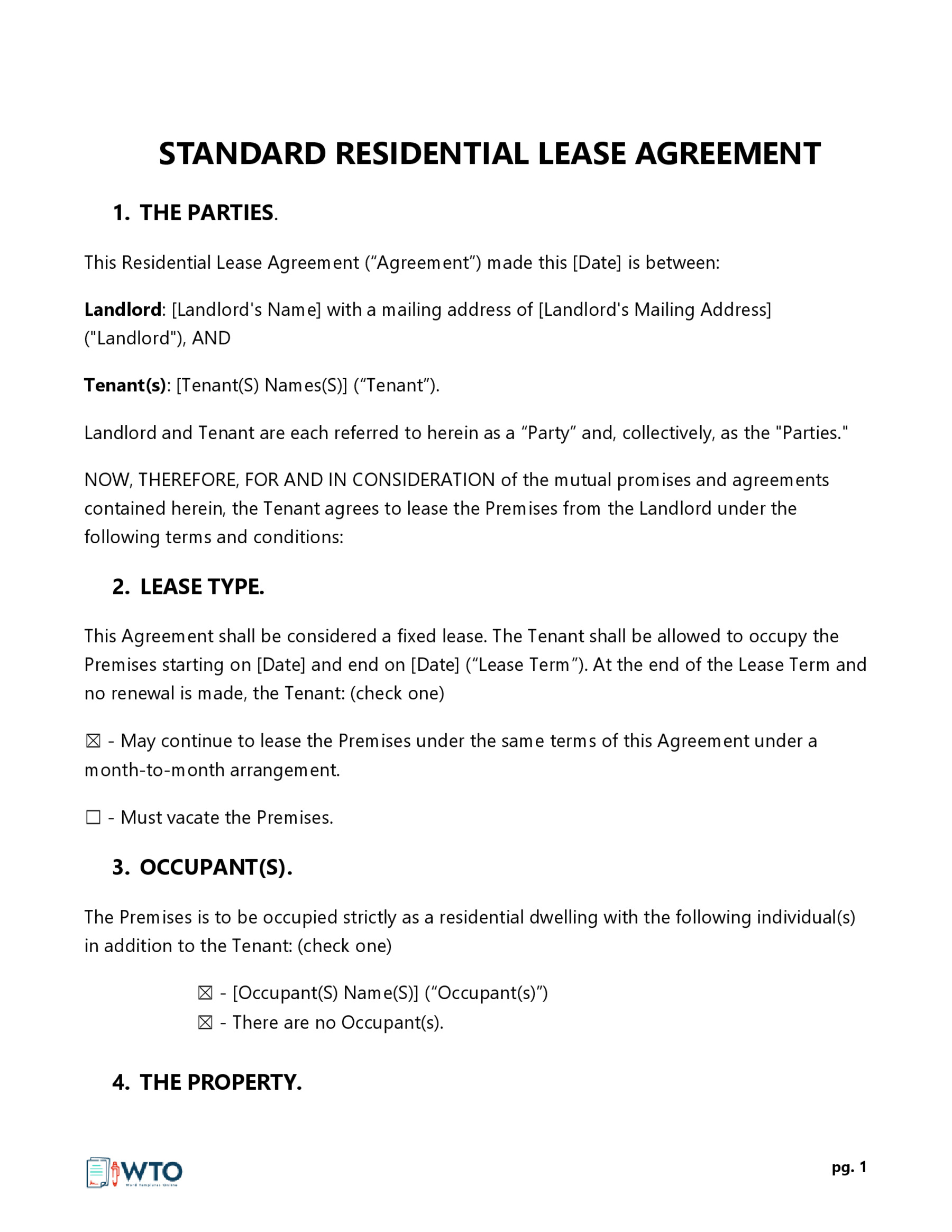
A standard lease agreement is a yearly rental agreement between the lessor and lessee. It can also be for any other fixed period.
Sublease (sublet) agreement form
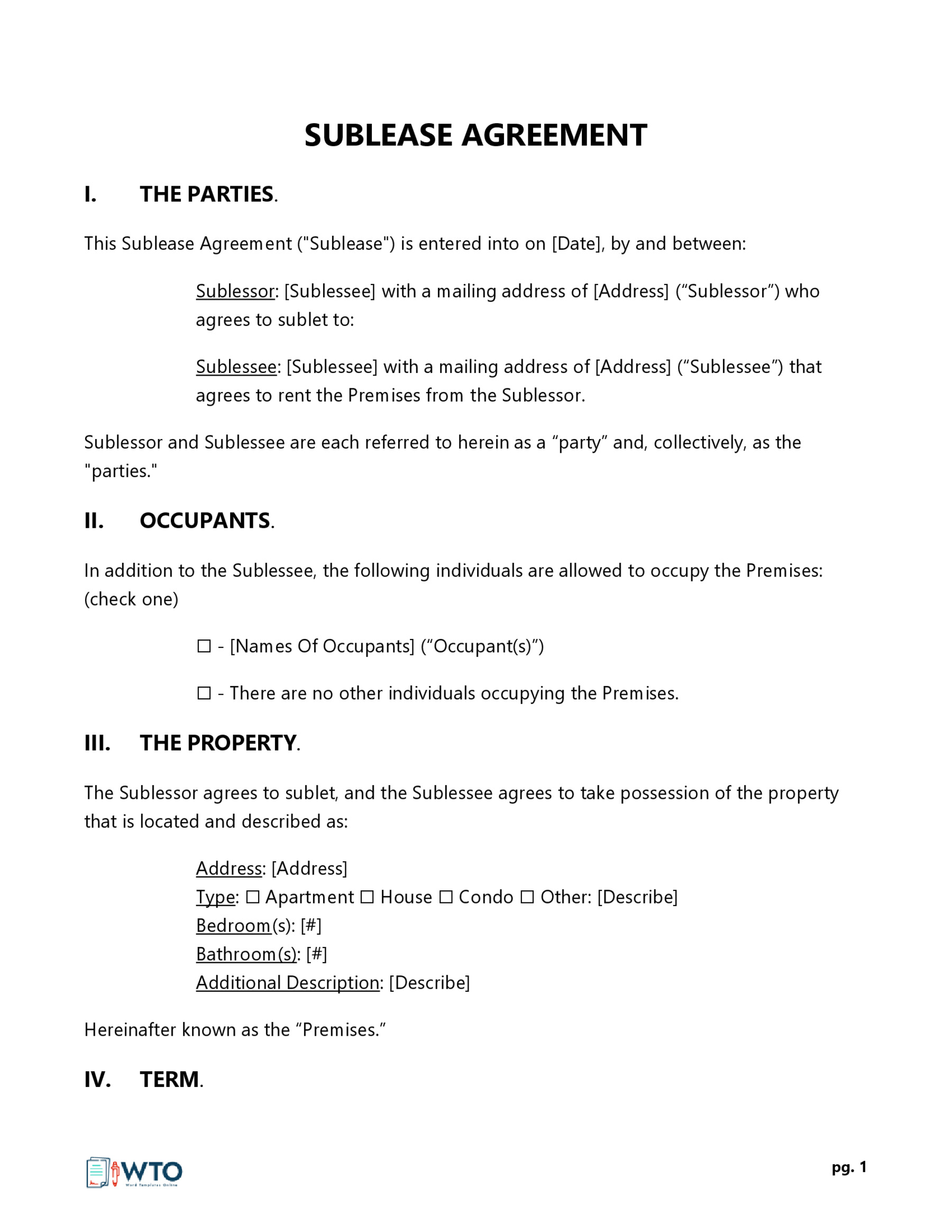
This is a type of commercial lease agreement in which the tenant agrees to sublet the property to another person and or company who will occupy the property on behalf of the original tenant.
Vacation rental form
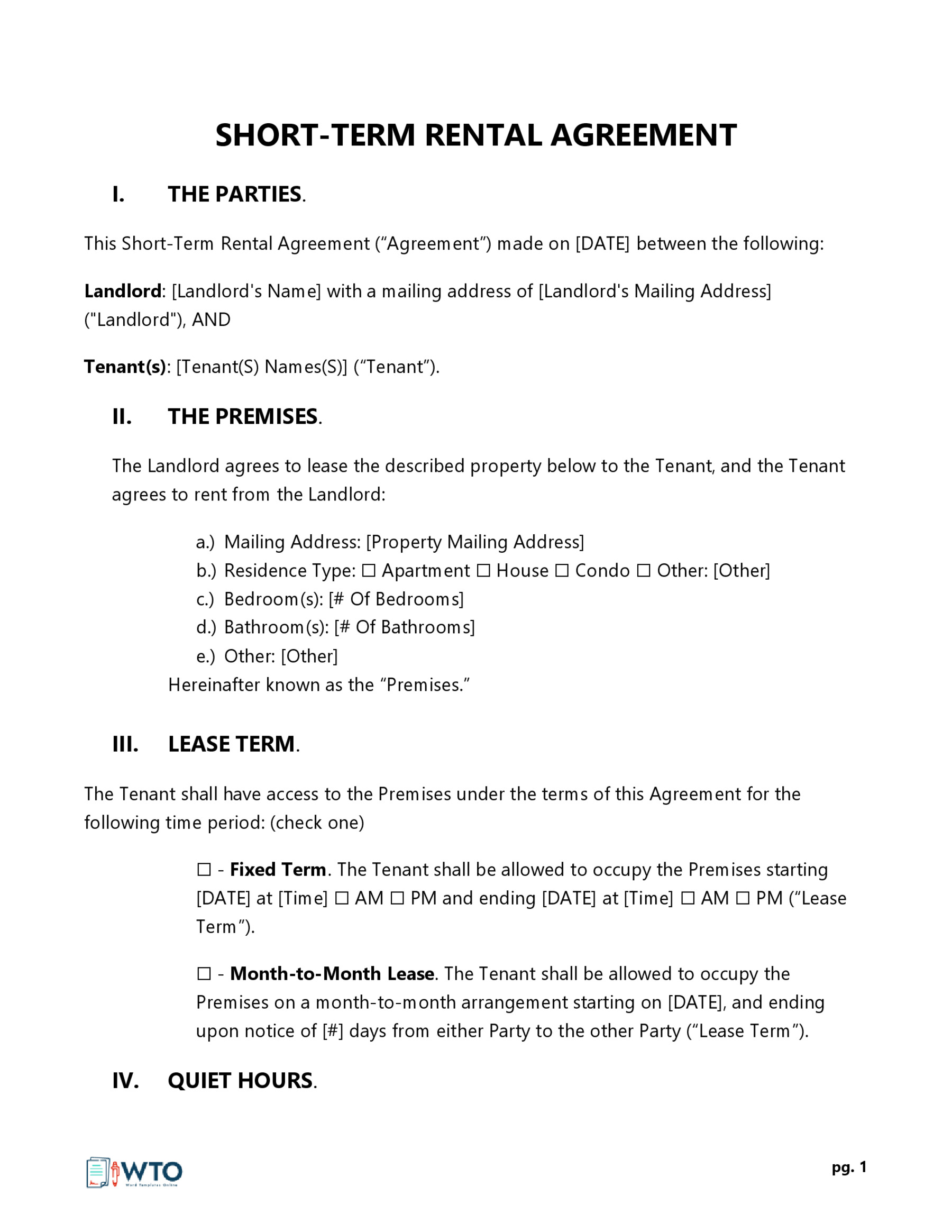
A vacation rental agreement form is used for leasing property for a short period of time. The most common use is for recreational purposes such as renting an RV or cabin to travelers or tourists.
Weekly rental form
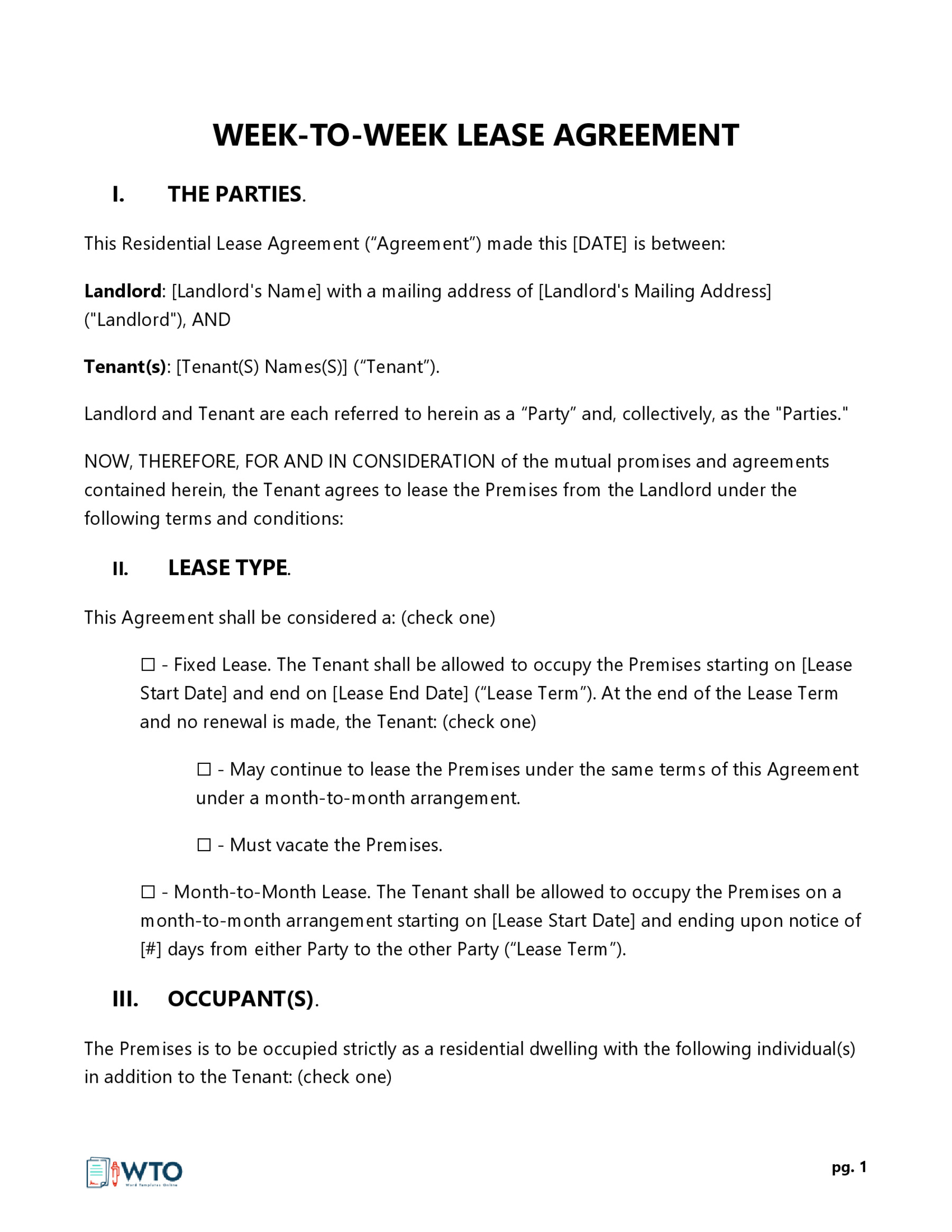
A weekly rental agreement form is for weekly rentals. Rent is paid every week. The most common use is for seasonal, summer, and holiday rentals.
By State
Lease agreement forms vary by state. Consequently, it is imperative for landlords to know the laws and guidelines relevant to the state where their property is located. This way, landlords who wish to rent their property can ensure that the terms of their lease agreement are suitable for the state where they plan on renting out their property.
Below are free state-wise rental agreement form templates that you can download, edit, and use for your ease:
Common Lease Agreement Disclosures and Addendums
Landlords are obligated to disclose certain details to tenants. As a result, the rental agreement form should have certain addendums and disclosures.
They include:
Asbestos disclosure
This is a disclosure that states if there are any asbestos materials in the building or on the property. By law, landlords must disclose all known asbestos materials to tenants. This disclosure is often mandatory for buildings dated prior to 1979.
Bed bug addendum
The landlord is required to list bed bug issues if the tenant requests them. In addition, according to federal law, landlords must provide a free inspection for bed bug infestation.
Carbon monoxide and smoke detector addendum
This is a disclosure that states if there are smoke detectors in the building or on the property. The landlord must disclose all known fire safety-related issues with the property and what measures have been made to ensure safety.
Death in rental unit disclosure
This disclosure states if a tenant has died or been killed in the building or on the property. The cause of death can also be stated.
Disclosure of lead-based hazards
Here, the landlord is required by law to inform tenants of lead-based paint that may exist in their rental unit. This disclosure is mandatory for buildings constructed prior to 1978 in most states.
Flood hazard area disclosure
This states that if any flooding hazard (e.g., areas prone to flood) exists on the property, this has to be stated in the lease and disclosed to renters before signing.
Foreclosure notice
A foreclosed property is any property that a mortgage lender has repossessed due to an unpaid mortgage. Before signing a lease, tenants must be aware of this actuality so that they can make a decision before moving in.
Illegal substance contamination disclosure
If there is illegal substance contamination on the property, it should be stated, indicating what kind of chemicals are in or around the property.
Mold disclosure
If a rental unit has mold issues, the landlord must inform tenants of this fact and the extent to which it exists.
Notice of abandoned personal property
The landlord must state how any personal property belonging to the tenants be abandoned after moving out will be handled.
Pet addendum
A pet addendum discloses whether pets are allowed within the premises and the terms and conditions of keeping a pet within the property.
Shared utility disclosure
The landlord should disclose whether the water, gas, electricity, and sewerage services are shared or not. This disclosure is often mandatory for buildings with multiple units.
Smoking lease addendum
The rental agreement form must state whether smoking is permitted within the premises. This addendum covers tobacco and marijuana smoking.
Frequently Asked Questions
The primary difference is lease agreements are longer than rental agreements. Lease agreements can span more than 12 months, while rental agreements will typically last for less than a year.
A tenant can be penalized for violating a lease. Penalties for a violation are usually in the form of fines, termination as a tenant, and/or loss of deposit. However, before implementing drastic measures, landlords will often give the tenant an opportunity to correct their wrongdoing depending on the severity of the violation.
As a landlord, you are responsible for; respecting and protecting the tenant’s right to “quiet enjoyment,” handling maintenance and repairs, ensuring your property complies with any housing codes and laws, accounting for security deposit payments, and refunding the security deposit at the end of the lease term and ensuring the rental unit is safe from vermin and health hazards.





